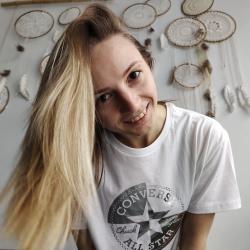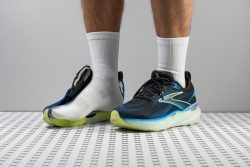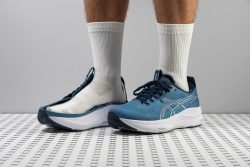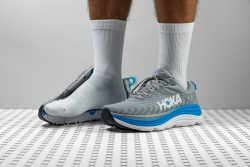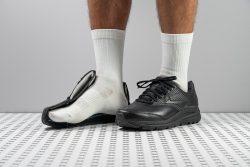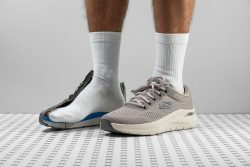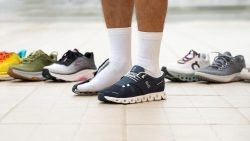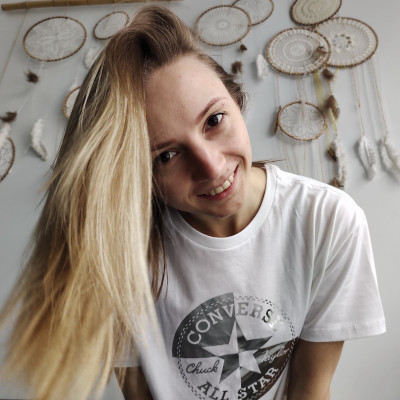7 Best Walking Shoes For Flat Feet in 2025
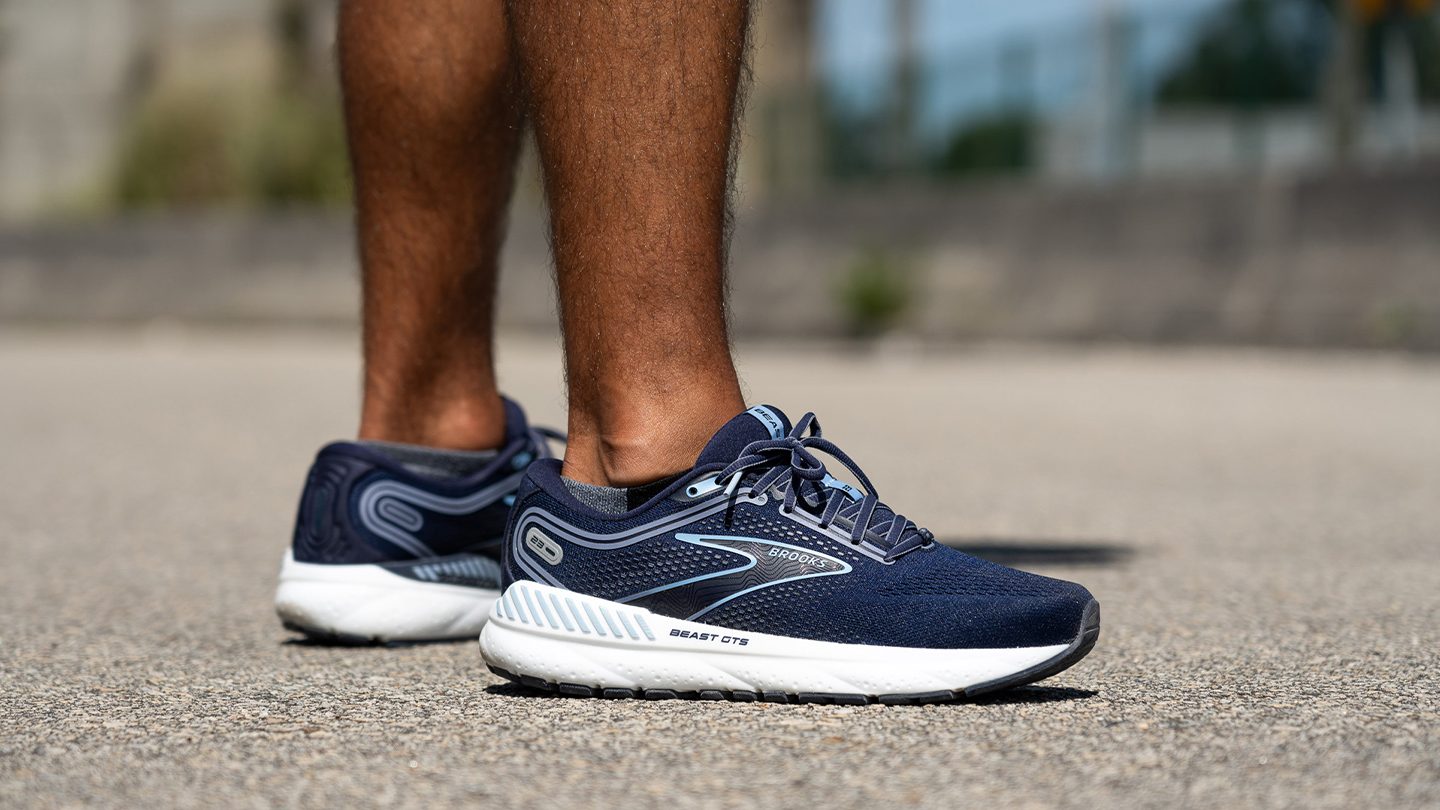
We buy shoes ourselves. We earn commissions when you buy through us, at no extra cost. Why trust us
Flat feet (also known as pes planus or pes valgus) are characterised by low arches: feet lay flat on the ground. In this guide, we cover the best walking shoes for flat feet, along with an in-depth overview of what you need to know if you have flat feet.
Having tested walking shoes recommended for flat feet, we have singled out the best options in different categories. If you have flat and wide feet, want a shoe that feels like a feather, or are not planning to spend over £90, we chose the excellent option for different cases based on our wear tests and lab tests.
Disclaimer: This guide was created for educational purposes and tends in no way to offer medical advice or diagnosis.
How we test walking shoes for flat feet
We take pride in producing full-on, transparent reviews that discuss what we personally like or dislike in shoes, depending on their use. We go to great lengths to accomplish this, starting with us buying walking shoes using our own money. We follow this simple rule very strictly because we do not want to give ourselves, as well as our readers, any reason to be biased or to find us with favourites.
We then proceed with wear-testing the shoes. The flat footers among us testers are given time to walk, stand, and even lightly jog or work out in these walking shoes. This is to gain realistic experiences with the walking shoes.
Furthermore, we subject the shoes to different sets of lab tests. We collect data regarding the shoes' shock absorption, breathability, water tightness, flexibility, and more. For flat footers, of course, we are after the support. Therefore, we have standardised tests to determine the midsole's firmness and the shoe's stiffness.
Best overall walking shoes for flat feet
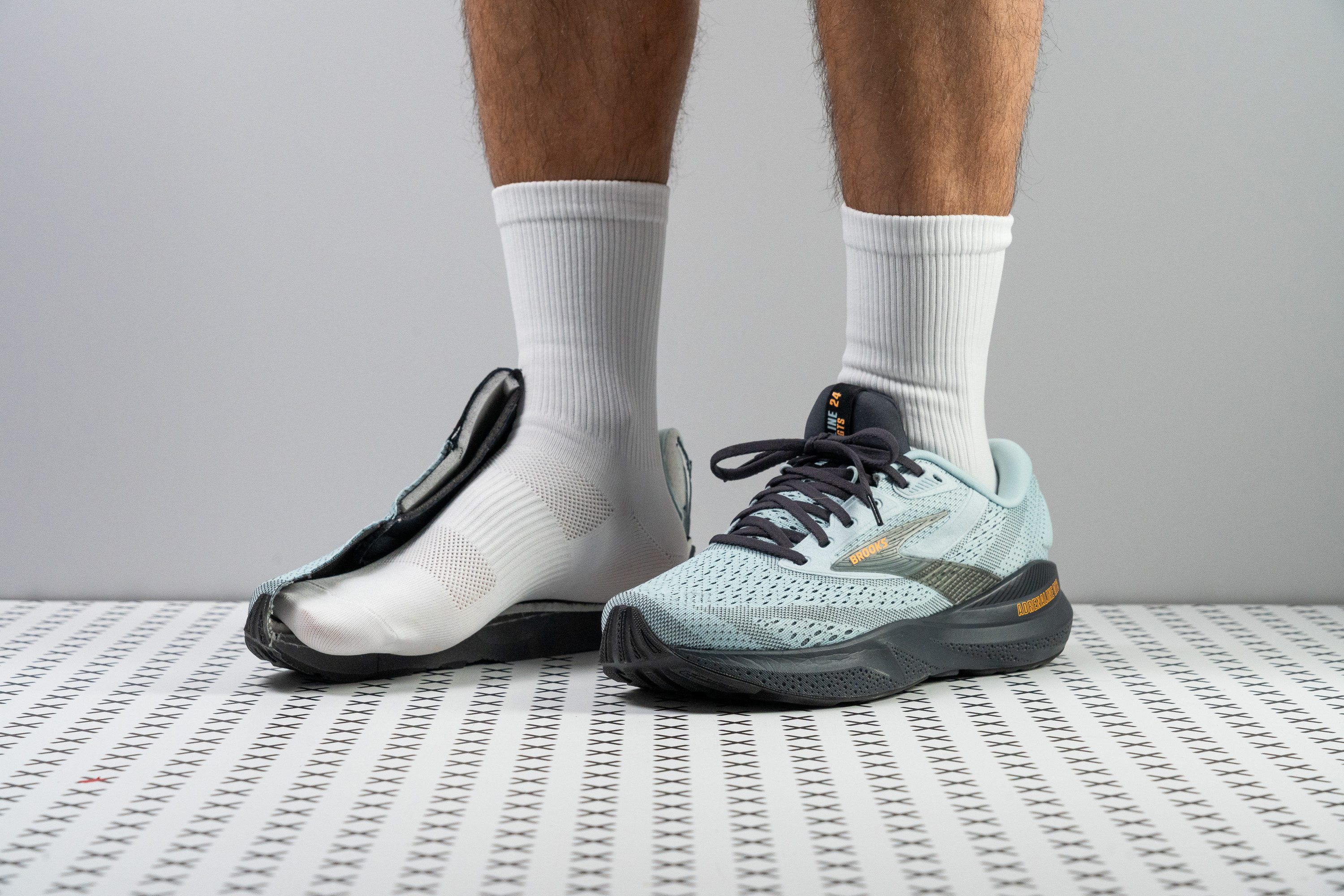


















































What makes it the best?
The Brooks Adrenaline GTS 24 offers strong arch support and good joint protection that had us going the distance during our strolls, making it our leading walking shoe for flat feet. It features the GuideRails technology, securing our feet well inside the shoe. Meanwhile, lab tests confirm it offers freedom of movement through its malleable midsole.
The GuideRails technology works well in keeping us centred because it raises the midsole walls to embrace our feet in place. It’s highly resistant to twisting, proven by its 4/5 torsional rigidity score in our assessment. We also discovered the reinforced medial post, which serves to limit excessive arch collapse.
It's a relief that it doesn’t maintain the same stiffness longitudinally. In our bend test, Adrenaline GTS 24 is 32.7% more adaptive than average, which translates to a more comfortable and effortless experience.
Comfort is further enhanced through its well-balanced cushioning. Our shock absorption test shows good impact protection without the sink-in feel, with near-average scores of 121 SA (heel) and 96 SA (forefoot).
However, we had to drag its 10.3 oz (291g) weight around in the latter part of the day. Those seeking a lightweight walking shoe should try alternatives.
Pros
- Stack height upgrade!
- Reliable support
- Breathable mesh with oversized vents
- Price remains unchanged
- Available in 4 width options
- Good durability
- Plush tongue for top comfort
- Ideal for heel strikers
- Foam upgrade to DNA Loft v3
Cons
- Firmer-than-expected midsole
- High drop may feel too steep
- Toebox height is a bit low
- Non-gusseted tongue
Walking shoes for flat feet with the best shock absorption




















































What makes it the best?
Among all the walking shoes we've tested in and out of the lab, we fell head over heels with Brooks Glycerin GTS 22’s exceptional support for fallen arches. Its generous cushioning provides heavenly comfort and remarkable support, effectively mitigating localised tension and unwanted stress. It effortlessly ranks #1 in shock absorption for flat-foot walking.
Our feet enjoyed effective impact protection from its generous 37.8/27.7 mm stack, serving unlimited cushioning for all-day walking. To put a number to it, we tested a high shock absorption score of 122 SA. To enhance support, our durometer confirms the firm and stable sensation we felt underfoot: a main 24.1 HA foam and an even firmer 27.6 HA under the heel for steady landings.
Another guiding force is the GuideRails system, present in the midsole’s sidewalls for resisting unwanted twists and lateral movements. This keeps us centred and effectively mitigates injuries, evidenced by its 4/5 torsional rigidity in our manual assessment. We felt confident with every stride, thanks to this Brooks’ stable ride.
However, all the cushioning dragged the weight department down by 14.7% vs. the average. If this is a red flag, we suggest sporting a different shoe.
Pros
- Fantastic stability
- Impressively cushioned
- All-day comfort
- World-class outsole durability
- Superb lockdown with zero slippage
- Extra-breathable mesh
- Multiple width options
- New DNA Tuned midsole
- Does the job as a casual shoe
Cons
- Underfoot feel is firm
- Slightly heavy
- EVA-based foam lacks energy return
- Small price bump
Walking shoes for flat feel with the best durability














































What makes it the best?
Our on-foot testing with the ASICS Gel Kayano 32 gave us luxurious cushioning and surefootedness like no other. The platform delivers solid support without losing its lasting comfort. Plus, our lab tests prove the outsole can cover lots of ground! Therefore, it’s our best durable walking shoe for flat feet.
The Hybrid ASICSGRIP outsole is ready to gobble up the miles with its fresh look, even after extensive testing. Our traction test shows a solid 0.84 score, one of the highest we’ve seen, indicating reliable grip on wet and dry surfaces. Amazingly, this traction is not at the expense of durability, since the rubber measures a thick 4.5 mm and showed 30.0% less damage than average in our Dremel test. With strategically-placed rubber, it's ready to take on potentially overpronating strides.
The 32nd version's comfort level blew us away. We’re blessed with a generous 39.9 mm heel, with the PureGEL inserted in the rear for even softer landings. It felt like walking on clouds, especially as we landed heel-first. True enough, the heel scored a high shock absorption score of 133 SA, helping keep our legs fresh.
The GK32 delivers a stable ride through its 4D Guidance System, midsole sidewalls, and expansive base. Our calliper reveals a midsole width of 119.8/97.2 mm, reassuring our foot alignment.
Unfortunately, because of its size, GK32 loses its flexibility, emerging 12.7% stiffer than average in our bend test. Those who prefer a more natural sensation should try alternatives.
Pros
- Amazing shock absorption
- Plush and breathable upper
- Made to last
- Dependable for most pronators
- Heavy-duty outsole with excellent grip
- Stable as a table
- Pillow-soft heel padding
- Improved fit
- Excellent build quality
Cons
- Not for soft-foam lovers
- Bad energy return
- Overpriced in Europe
Best walking shoes for wide and flat feet
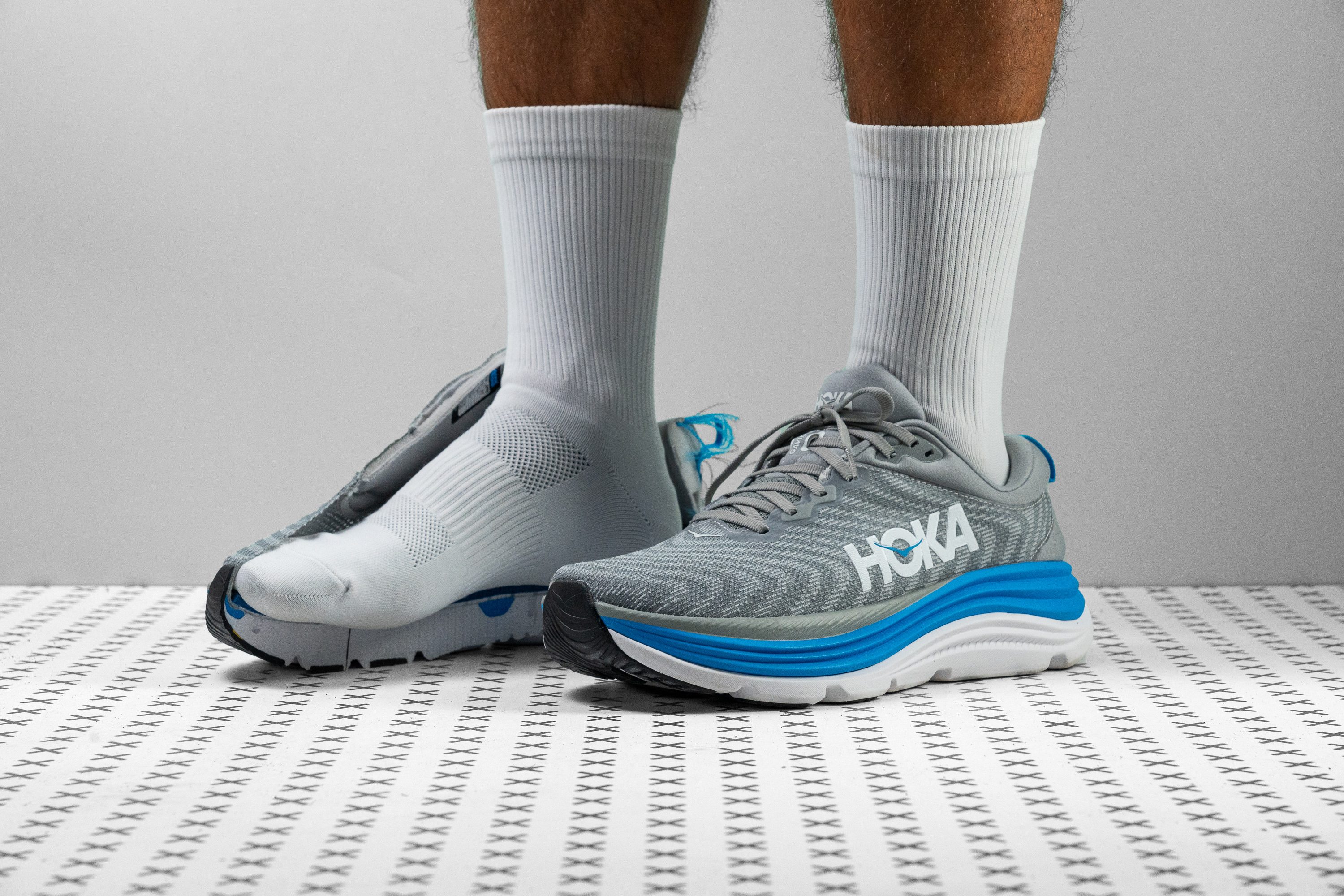



















































What makes it the best?
Our outdoor testing and lab analysis reveals that the Hoka Gaviota 5 is the best walking shoe for flat and wide feet. It features an accommodating fit infused with subtle stiff elements like the H-Frame to stabilise the ride while ensuring comfort through its delightful cushioning and ventilated mesh upper.
The midsole provides a spacious base that allows for very broad feet. At 125.1/106.6 mm, it’s one of the widest we’ve seen and creates a reassuring sense of security with every stride. The H-Frame also adds rigidity to the midsole to further guide our foot alignment without being too intrusive.
Even the front had generous space for natural toe splaying. From the widest part of the toebox to its 83.1 mm big toe area, we never felt restricted. Adding to the comfort is the breeze that flows in and out freely of the mesh upper, evidenced by its perfect breathability score in the lab.
The cushioning gave our arches much-needed support, which avoided any localised pain. Our durometer confirms a plush 12.9 HA foam, while the second 22.0 HA cushion is firmer to keep our landings in control.
The platform features a low 2.2 mm drop, which may not be everyone’s cup of tea. Those who need more calf and arch support should find pairs with higher drops.
Pros
- Remarkably stable
- Breathable and comfortable upper
- Lightweight for its size
- Good stability option for forefoot strikers
- Ideal for wide feet
- Excellent for long runs
- Excellent for long runs
Cons
- Low drop might pose issues for heel strikers
- Performs poorly in colder conditions
- Not for narrow feet
- Midsole feels flat
Best lightweight walking shoes for flat feet
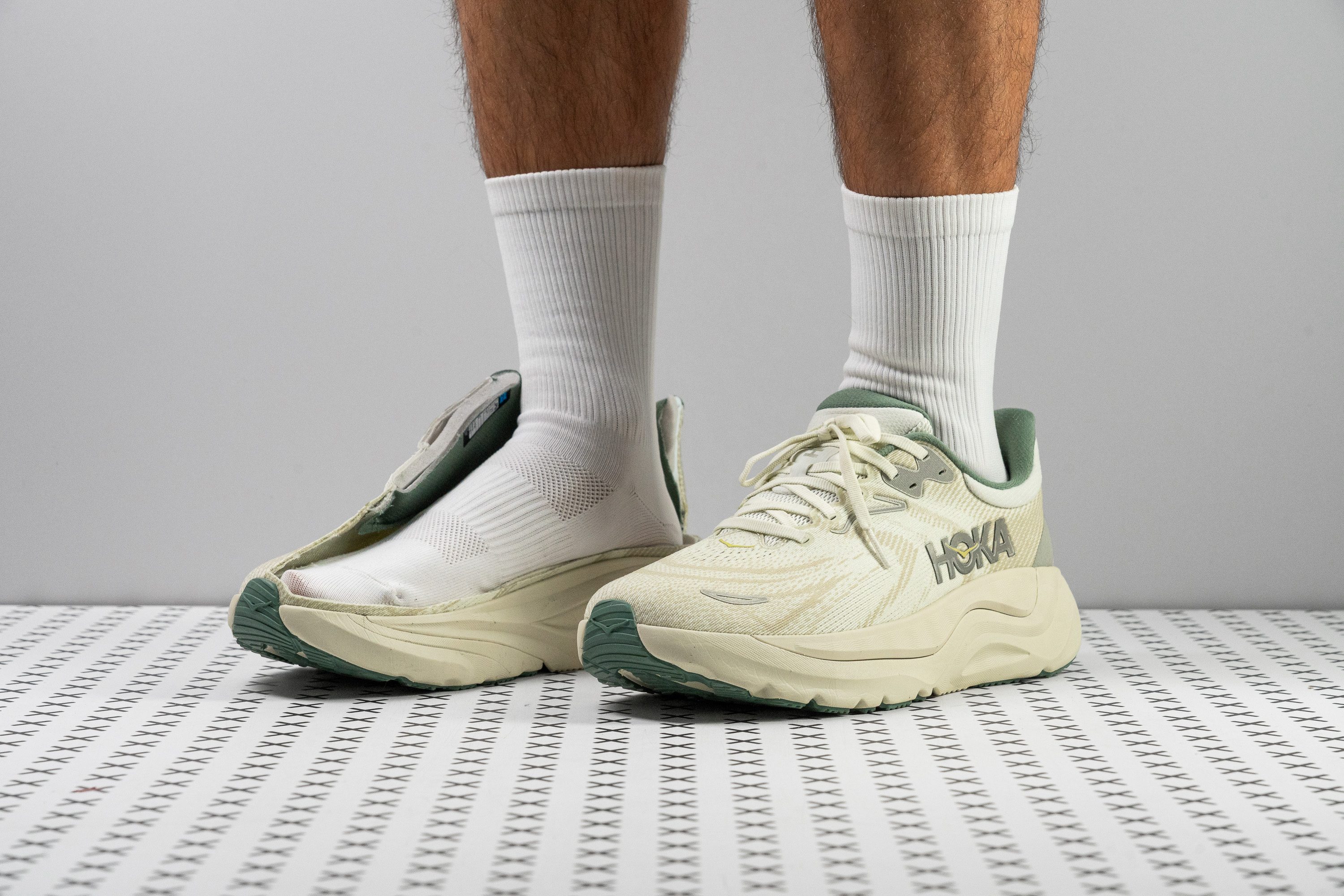











































What makes it the best?
Based on the test results we gathered in our walks and lab analysis, the Hoka Arahi 8 has earned the title of the ultimate lightweight walking shoe for flat feet. Although its weight is slashed, the reinforcing features of this shoe offer gentle support.
Utilising our digital scale, we established that Arahi 8 only weighs 9.1 oz (259g), which indicates an 11.7% drop vs. the average stability shoe. On our walks, the shoe did feel weightless, freeing our feet from a burdensome load.
Arahi 8 has the Hoka’s H-Frame technology as its main stabiliser, which ensures our foot motions are aligned and centred. This aspect manifested in the rigidity of the shoe, which we found to be 22.0% stiffer than the average walking shoe. Torsionally, it earned the maximum 5/5 rigidity rating.
The substantial base of the shoe also helped us maintain our steadiness, notably its 96.3 mm heel, which is the first to hit the ground when walking.
The double-layer jacquard mesh upper feels premium to the touch but lacks breathability for warm weather. Those who don’t want to overheat should find a more ventilated shoe.
Pros
- Impressively lightweight for its size
- Strong shock absorption
- Wider fit than previous versions
- Outstanding durability across upper and outsole
- Early-Stage Meta Rocker smooths transitions
- Higher drop suits better heel strikers
- Comfy and plush for everyday use
- H-Frame stability system
- Comfortable heel counter
Cons
- Very poor breathability
- Grip needs to improve
- Still no supercritical foam
- Minor price bump
Best leather walking shoes for flat feet
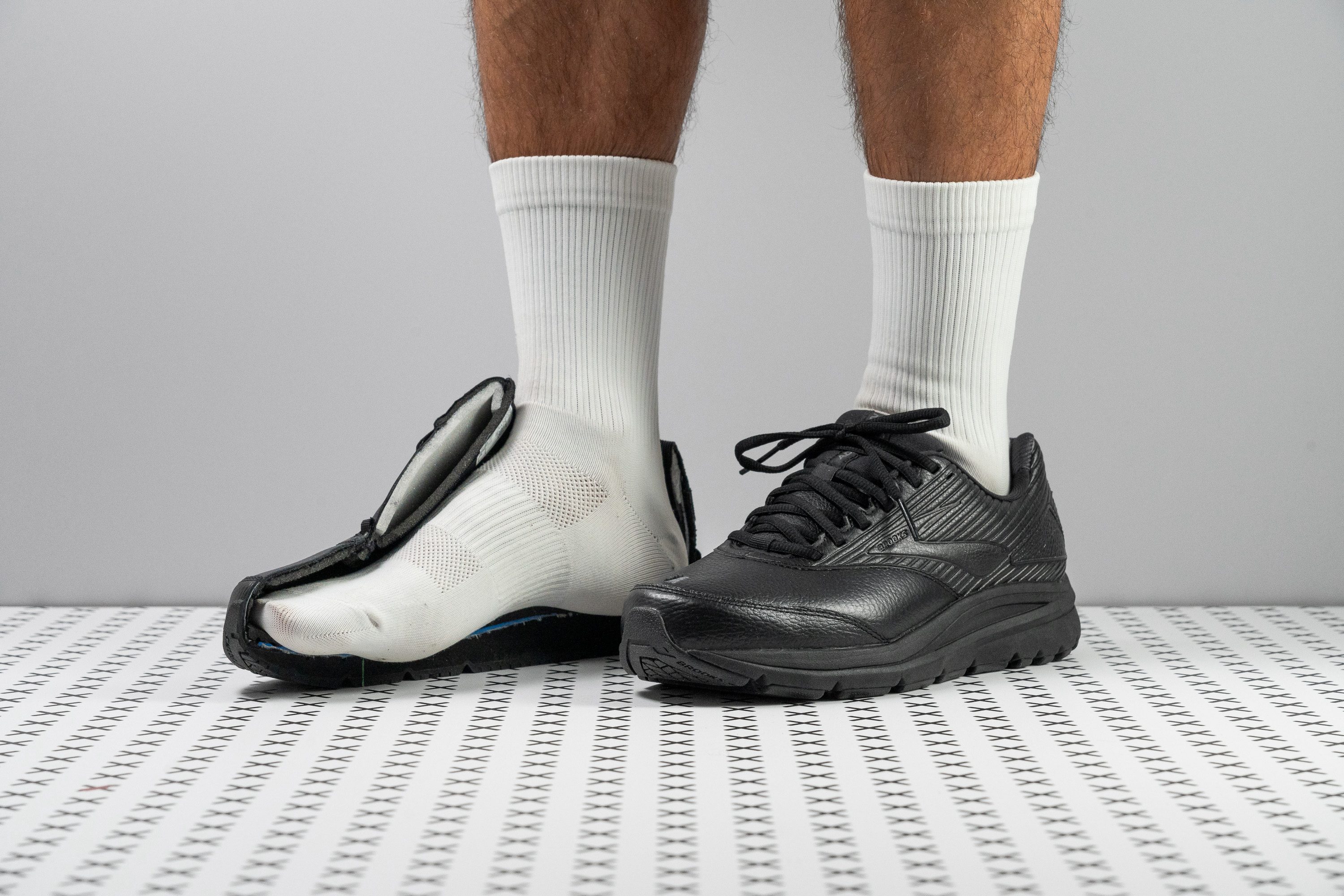
























































What makes it the best?
Through actual wear tests and lab analysis, we learned that Brooks Addiction Walker 2 brings immense support and security. From its sturdy construction to its balanced midsole, it inspires confident and balanced strides for countless hours. On top of that, it’s extremely comfy on foot, earning our approval as the best leather walking shoe for flat feet.
The durability of the all-leather AW2 shoe is undeniable, as our Dremel test barely made a mark on its upper. With a top score of 5/5 for the toebox, it proves resistant to wear and tear. Even underfoot, the outsole proved its robustness measuring 2.9 mm thicker and 11.6% harder than average.
Comfort is further enhanced by its above-average stack, while the balanced foam enhances stability by maintaining its shape even under heavy loads. Our arches felt supported by the 25.9 HA cushion.
The midfoot features a strategically positioned Extended Progressive Diagonal Bar, providing reliable support right under our arches and reducing excessive movements. Its stiffness, scoring the highest 5/5, keeps us centred, especially during fatigue-induced changes in foot strike.
However, the shoe’s sturdy build comes with added weight. At 13.7 oz (388g), the AW2 is 39.6% heavier than the average walking shoe.
Pros
- Unmatched stability and arch support
- Broadly recommended by podiatrists
- Incredible abrasion resistance and durability
- Thick and lasting cushioning
- Wide and steady platform
- Great for cold and drizzly days
- Comfortable in-shoe feel
- True to size and fit
- Can match formal work attire
Cons
- Heavier than average
- Quite stiff, needs breaking on
- Not as slip-resistant as claimed
- Not breathable
Best budget walking shoes for flat feet
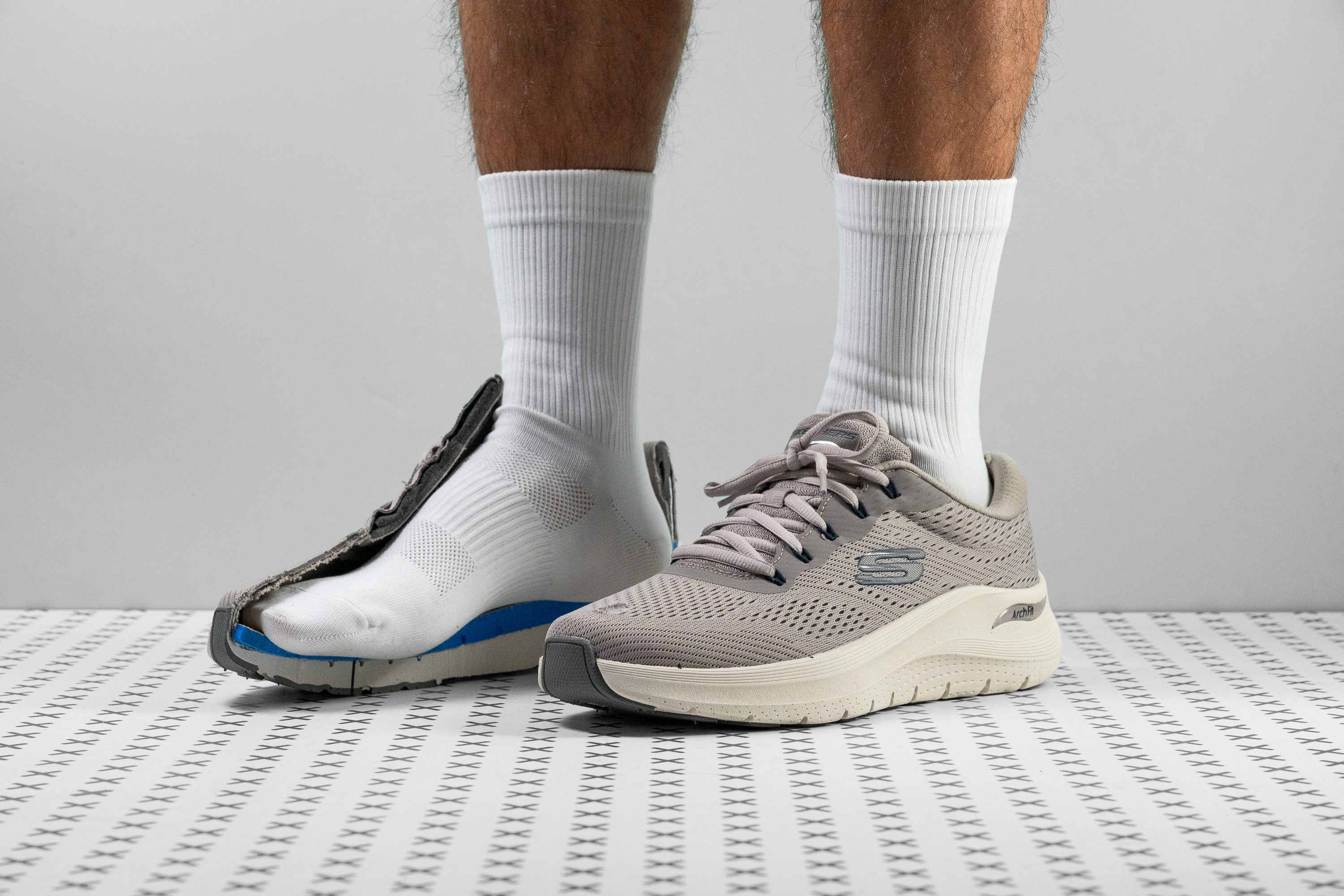














































What makes it the best?
Through exhaustive efforts of testing walking shoes, we found that the outstanding pair for flat-footers on a budget is the Skechers Arch Fit 2.0! This walking shoe has supportiveness written all over it, from great cushioning to a wide base. Combined with extra impact protection, its £90 price, which is 23.1% lower than average is definitely a superb trade.
With Skechers Arch Fit 2.0, our strides are as steady as can be. We owe this to the base of the shoe, which has a wide surface area. We measured the platform to be 114.5 mm wide in the forefoot and 90.9 mm in the heel. Apart from the forefoot being 3.4 mm wider and the heel being almost equal to the average, the combination granted us firm footing, as well as reduced pronation.
Another factor that controlled our excessive pronation is the shoe’s well-balanced flexibility. We bent the shoe and we measured the force it exerted to counter the bending to be close to average at 13.4N, offering comfort without making our foot muscles overwork.
However, its affordability mirrored its quality. We easily damaged the walking shoe’s heel padding and toebox with our Dremel, scoring 1/5 and 2/5 in durability, respectively. While we recommend the Skechers Arch Fit 2.0 for thrifty spenders, we do not recommend them to harsh users.
Pros
- Amazing support for overpronation
- Tonnes of cushioning
- Wide and stable platform
- Lighter than the Arch Fit 1.0
- Perfect for all-day wear
- Padded and cosy interiors
- Great traction on wet and dry surfaces
- True to size
Cons
- Very poor breathability
- Lacks durability
Do you need shoes for flat feet?
Yes, if you have flat feet.
There are two types of flat feet: rigid and flexible. Rigid is handled with surgery, because the arch of the foot is always missing, whether it’s a weight- or non weight-bearing condition. Flexible flat feet miss the arch only when weight bearing. When feet are elevated, arch is visible. This type of flat feet is the focus of this guide.
Symptoms of flat feet
Flat feet are tightly related to severe overpronation: feet rolling inward during walking.

Aside from the obvious visual representation, possible symptoms of flat feet are:
- Painful or achy feet
- Leg and back pain
- Swelling on the inner side of your feet
- Feet get tired easily
Discover your arch type
If, based on the graph above, you’re still not sure about your arch type, you can do a quick wet test to find out. Follow these steps:
- Wet the soles of your feet (ideally both of them) in a water basin
- Stand on a piece of paper for a few seconds (until the moisture from your feet sinks onto the paper)
- Step off
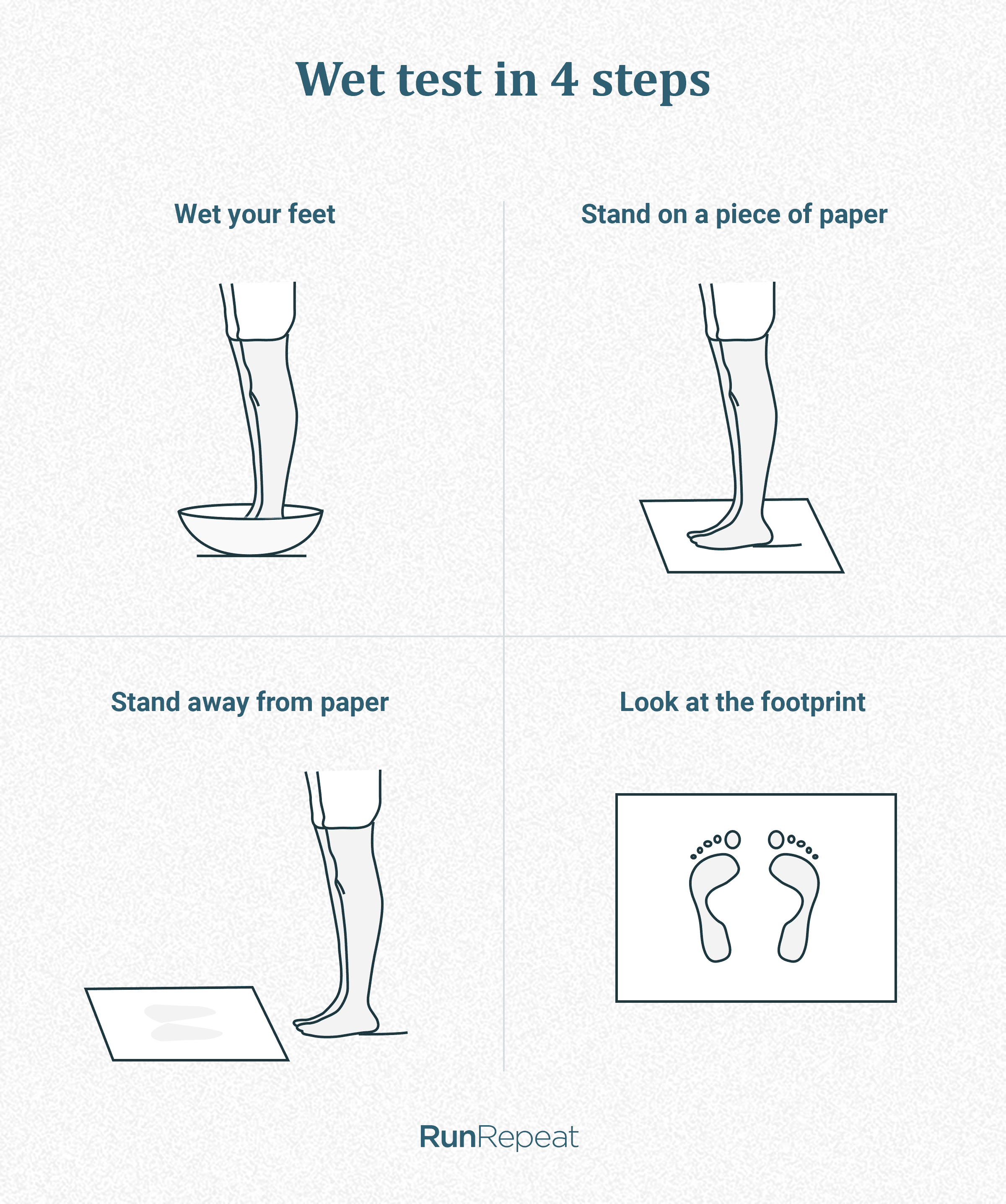
Look at the shape of your footprint and compare it to the ones shown below.
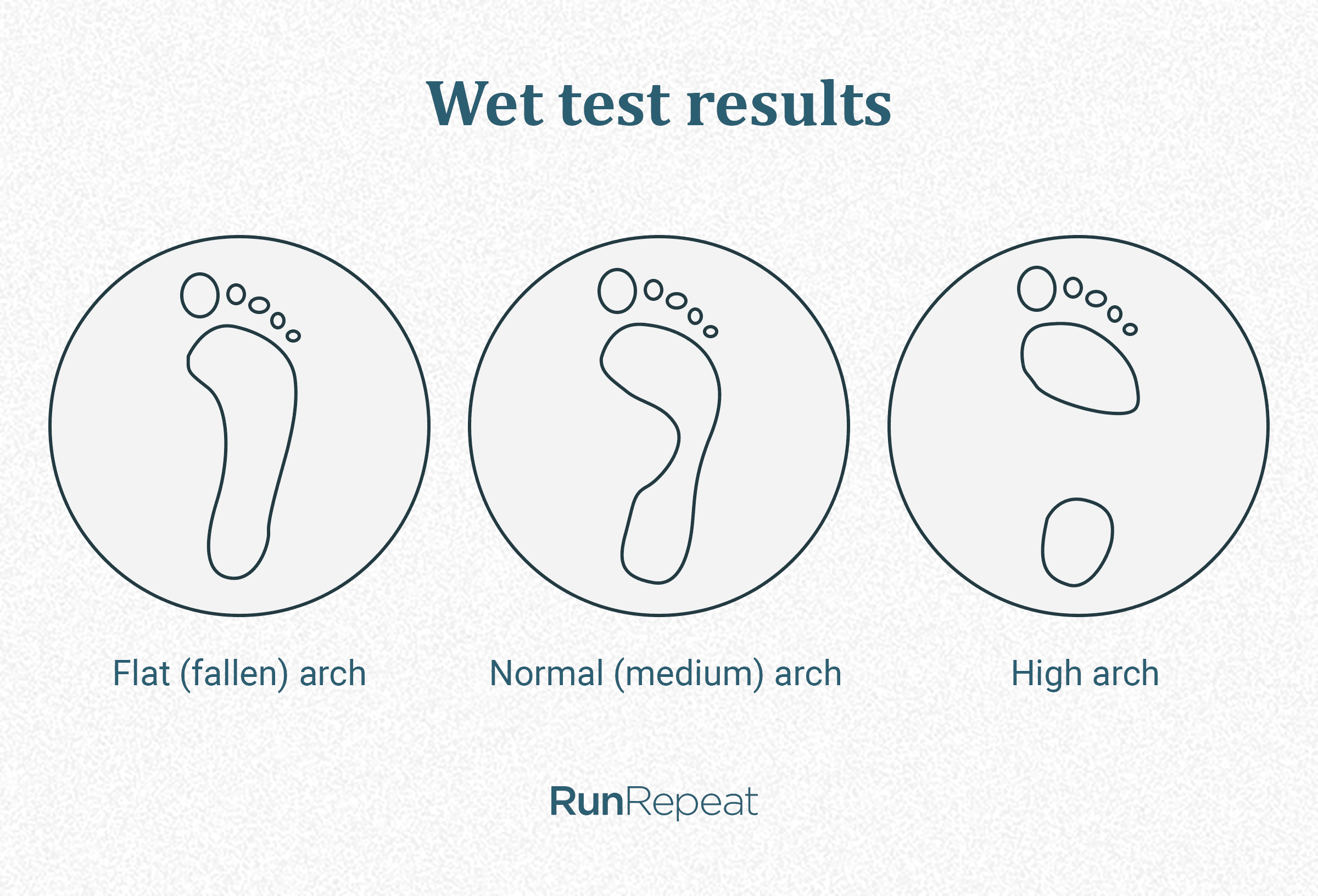
It is easy to notice the difference between these types: flat arch simply leaves the biggest wet footprint, without a distinctive curve between forefoot and the heel.
If you’re not confident about this test or feel your feet need more attention, consult a podiatrist. They look at your barefoot movement, pronation, tibia rotation, and heel deviation - which gives them a complete picture of your feet.
6 Features of walking shoes for flat feet
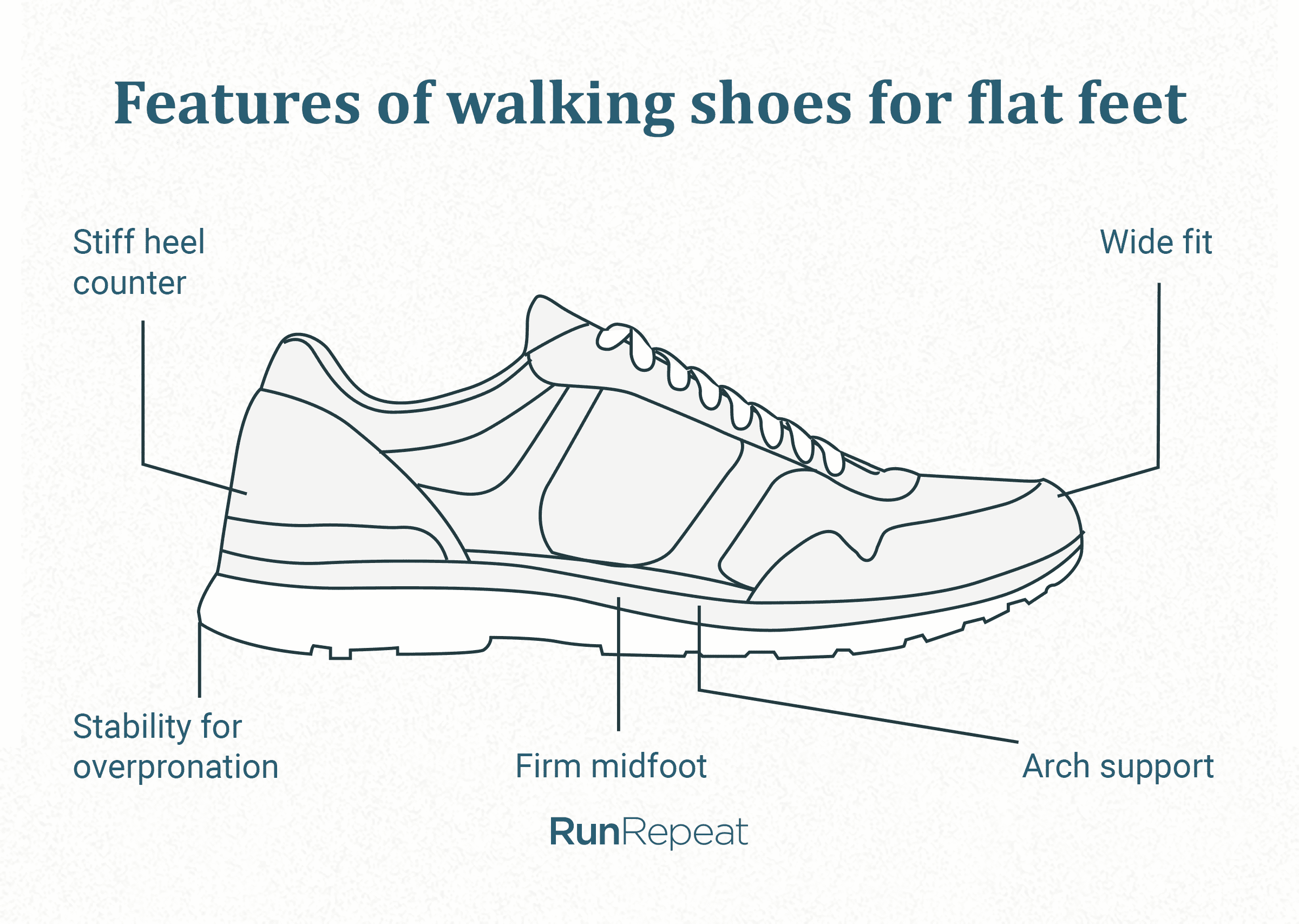
1. Arch support
- Makes the movement more comfortable
- This study has shown that oxygen consumption during walking is decreased when a suitable arch support for flat feet is used.
- Wearing arch support insoles can be beneficial for uphill and downhill walking exercises in persons with flatfoot because the results of this study showed that oxygen uptake was effectively decreased during uphill and downhill walking, and there was less rectus femoris muscle fatigue (one of the quadriceps muscles) during downhill walking (as shown here).
2. Stability for overpronation
- Stability features are needed to support the foot and distribute weight evenly. Stability for overpronators is explained in detail in our guide for overpronation shoes.
3. Stiff heel counter
- Heel support is needed so the heel is stable and the foot doesn’t roll inward.
- Look for a stiff heel counter and padded heel (for comfort).
- You should look for a snug fit in the heel area.
4. Firm midfoot
- Choose shoes that are more on the firm than on the soft side. Your feet need stability. This means you shouldn’t be able to twist (torsional flexion) the shoe easily, only to a degree.
5. Wide-fit shoes
- People with flat feet tend to choose wide models most often.
- Shoe should not squish (on top) or squeeze (from sides) the toes.
6. Removable insole
- This feature comes in handy when you decide to buy a pair of insoles for flat feet.
Average price of walking shoes for flat feet
When looking at the average MSRP (manufacturer's suggested retail price), we can see that walking shoes are more expensive than the other shoes. However, those prices are tagged when shoes appear on the market. You can always look for good deals (discounts). If you’re looking for tips on finding good deals, check our guide for buying cheap shoes.

Also, per our database, 21% of walking shoes are for flat feet.
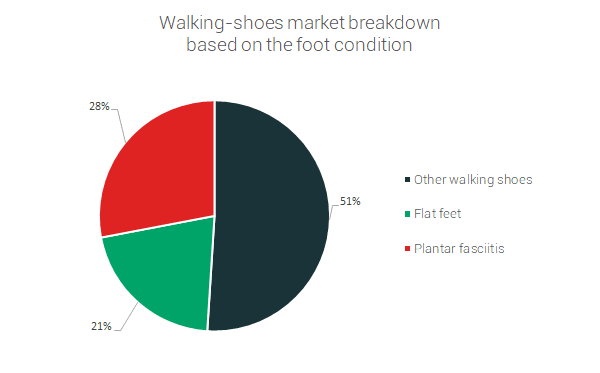
FAQ about flat feet
What causes flat feet?
Flat feet might be hereditary or acquired. For the latter, they happen as a consequence of obesity, ageing, pregnancy, or specific health conditions.
According to this study, the main factors that contribute to an acquired flat foot are excessive tension in the triceps surae (consists of two muscles and forms the main mass of the calf), obesity, posterior tibial tendon dysfunction, or ligamentous laxity in the spring ligament, plantar fascia, or other supporting plantar ligaments.
Weakness of the muscular, ligamentous, or bony arch supporting structures will lead to collapse of the arch. Basically there’s too little support for the arch or too much arch flattening effect. Acquired flat foot most often happens due to the combination of too much force flattening the arch in the face of too little support for the arch.
Does flexible flatfoot require treatment?
As shown in this study, the arches of flatfoot (and also normal foot) are obviously influenced when walking down the stairs. The plantar data were significantly increased. This goes to prove that it’s necessary to wear orthotic insoles for flexible flatfoot in order to prevent further deformation.
This study has also shown that using a foot insole improved foot alignment and decreased energy consumption in people with flat feet.
Can walking barefoot fix flat feet?
There is no evidence that would support this. People think that, for this to happen, muscles need to get stronger by walking barefoot. This study has shown that with strengthening the muscles the arch height doesn’t change, and this study has shown that stronger muscles don’t mean higher arch.
